People around the world are following the powerful uprising in Iran sparked by the outrageous murder of 22-year-old Mahsa Amini at the hands of the Islamic Republic’s “morality police.”
Many may wonder how the Iranian people came to be ruled by such violent oppressors and what, if any, role has the U.S. played in creating the nightmare they face.
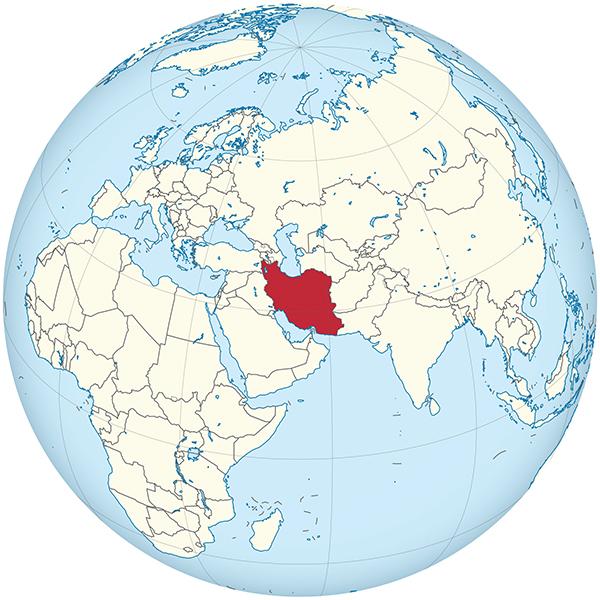
Iran: Early Victim of the British Empire
Iran (until 1935 called Persia) is located in the heart of the Middle East, at the intersection of Asia, Africa and Europe. Iran has a very long, rich history and culture.
At the beginning of the 1800s, it was a poor feudal society. The vast majority of Iranians were peasants living in rural areas, ruled by feudal lords, tribal heads and a king.
In the mid-1800s, Russia and Britain, both imperialist powers, were battling over which would control Iran and dominate the Middle East and Central Asia. Britain gained the upper hand in the early 1900s and took control of Iran’s vast petroleum resources. It plundered them for decades, reaping 84 percent of the profits, using them for its own interests, not Iran’s.
The British often claimed to be “civilizers,” but in Iran and elsewhere they relied on and buttressed the nation’s oppressive rulers, and largely left Iran’s traditional feudal relations, patriarchy and the Islamic religious establishment untouched.
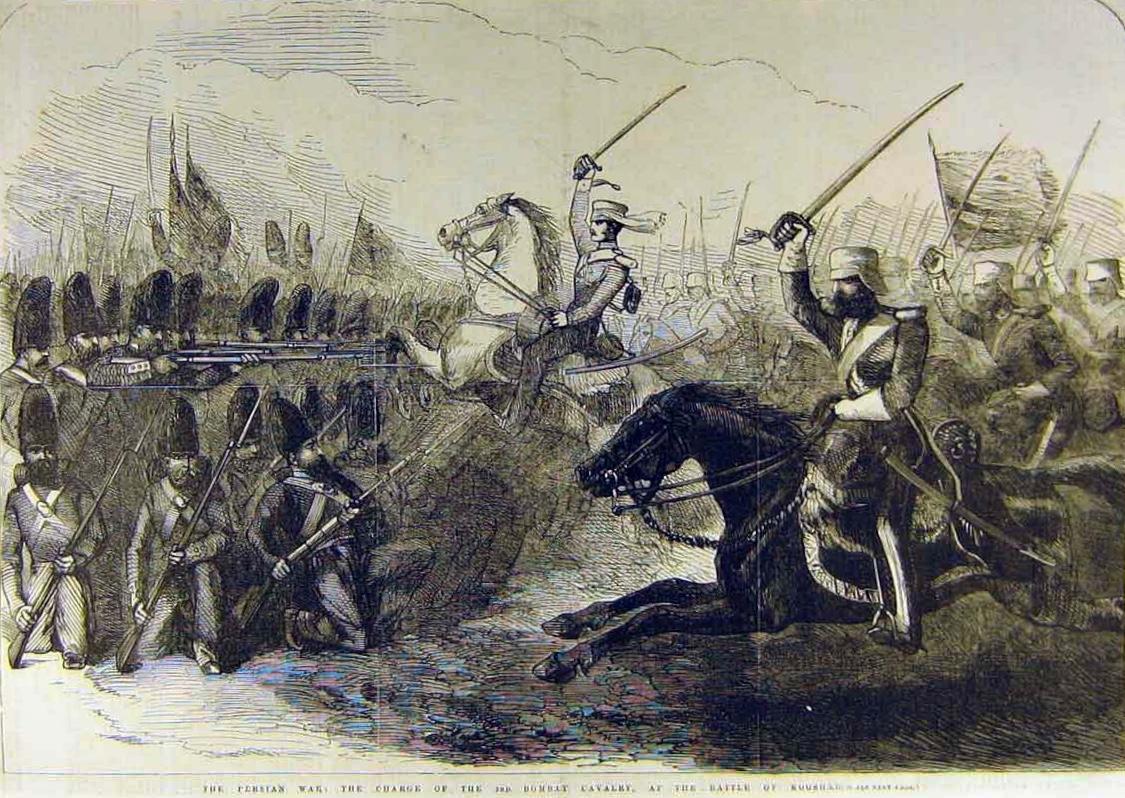
British engraving of British troops invading Persia, 1857
1953: The Horror of U.S. Imperialist Dominance Begins
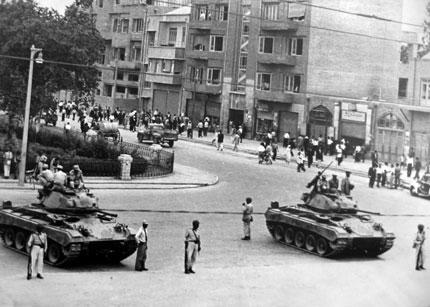
Pro-Shah Iranian troops in the streets, 1953.
After World War 2, a broad-based, nationalist movement arose in Iran in opposition to the monarchy and British domination and control of Iran’s oil. A new government headed by Prime Minister Mohammad Mossadegh soon nationalized Britain’s Anglo-Iranian Oil Company.
At the time, U.S. imperialism had emerged as the dominant world power, and it sought to take control in Iran and the Middle East. In 1953, the U.S. Central Intelligence Agency (CIA), backed by the British, orchestrated a violent coup that overthrew Mossadegh. The U.S. and Britain crushed Iran’s nationalist movement and put the tyrant King Mohammad Reza Pahlavi—the Shah—back on the throne. With the coup, the U.S. imperialists, not Britain, took over the driver’s seat.1

The cost to Iran and its people was horrific. The imperialists regained control of Iran’s oil, and the U.S. shaped Iran to suit its needs. Their creature, the Shah, built a massive police state and turned Iran into a regional U.S. gendarme.
The Shah’s repression was directed at radical, revolutionary, and progressive forces, and not mainly the Islamic forces. Thousands of progressive people were murdered, jailed, or barbarically tortured.2
Meanwhile, the U.S. conceived and directed programs such as limited land reforms, granting women the vote, and opening Iran to greater foreign influence to “modernize” it. This antagonized and activated the more fundamentalist forces within Iran’s Islamic religious establishment, such as Ayatollah Khomeini, who came to prominence in 1963 for denouncing these changes.3
The Revolution of 1979
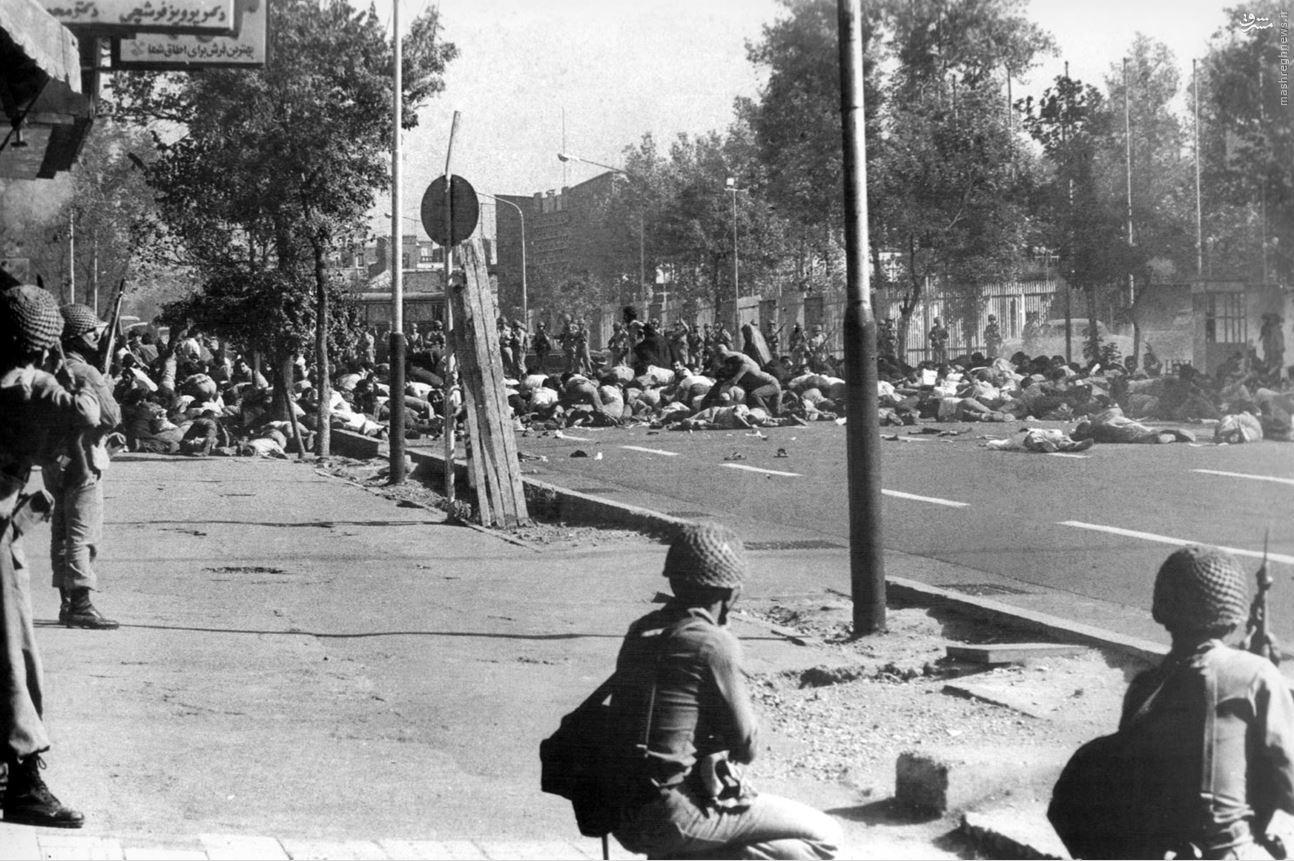
September 8, 1978, hundreds of protesters were killed or wounded by the Shah’s U.S.-backed military in Jaleh Square in Tehran. They were among the thousands killed by the Shah in cities around Iran that day.
The 1970s were a period of rapid and destabilizing social, political, and economic change. The growing middle class was suffocated by the Shah’s tyranny and outraged by his servitude to the U.S. Meanwhile, millions were driven from the countryside into sprawling urban shantytowns without water, sewage systems, or electricity. Impoverished, uprooted and adrift, many became a key base of support for the Islamic fundamentalists led by Ayatollah Khomeini.4
In 1978, just weeks after then-President Jimmy Carter hailed Iran as an “island of stability,” anti-Shah protests broke out. They grew over the year—drawing in millions, stoked in part by the Shah’s vicious U.S.-backed repression.
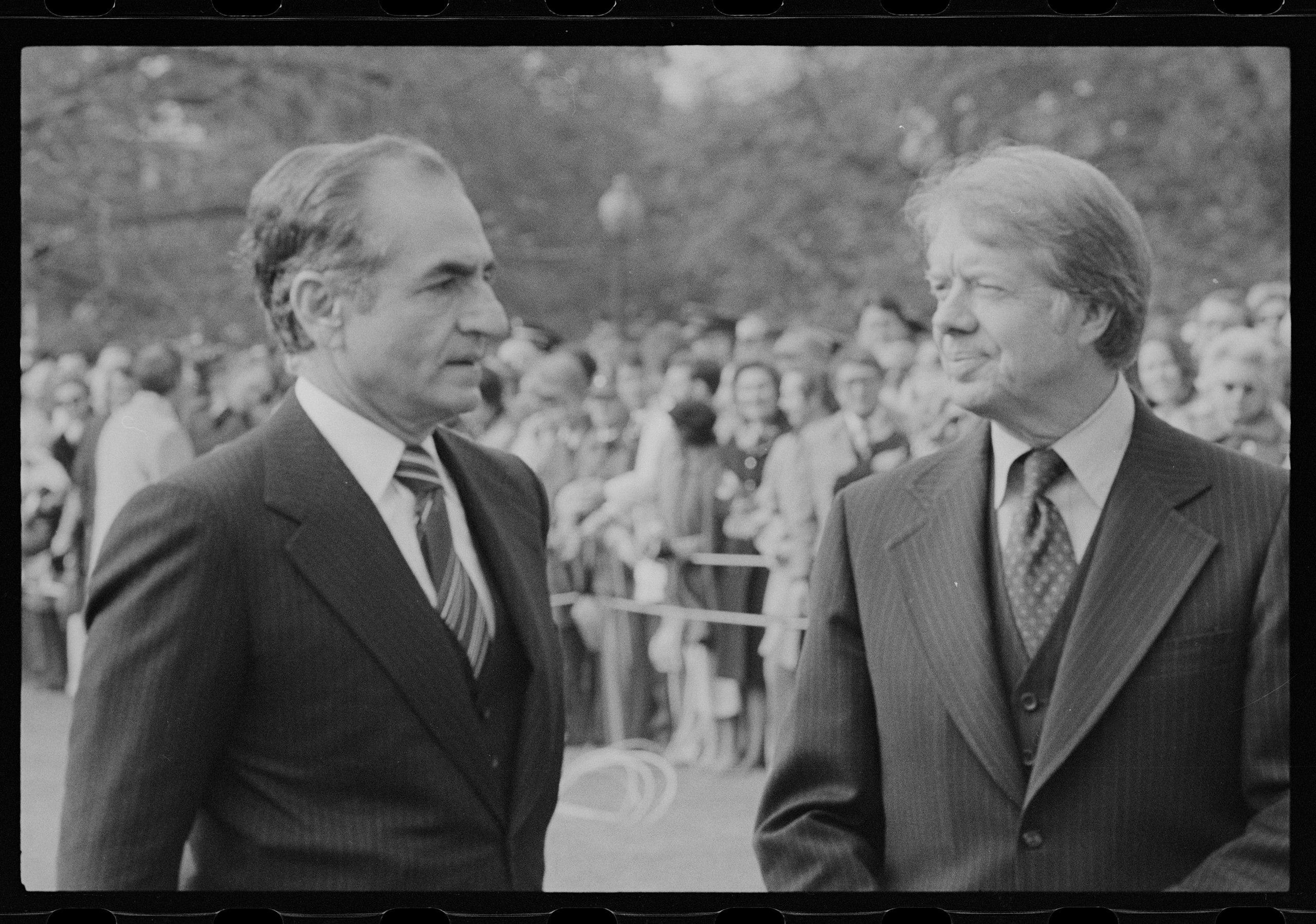
U.S. President Jimmy Carter with the Shah of Iran, 1977
By February 1979, the Shah had been driven out, and his regime was overthrown. This was a huge shock and jolt for the U.S. imperialists. This revolution had drawn in all strata, or layers, of Iranian society and many different political forces. Yet the well-organized reactionary Islamic theocrats led by Ayatollah Khomeini used their far-reaching ties to take power and form the Islamic Republic of Iran (IRI), aided in part by the U.S. decision to go along.5
Islamic Republic vs. U.S. Imperialism: Outmoded Reactionary Forces Clash and Sometimes Collaborate
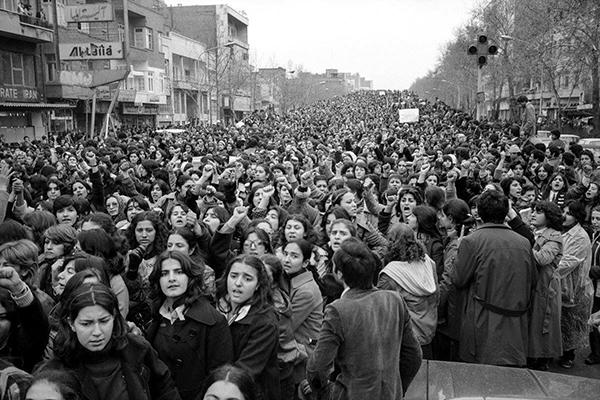
When the Islamic fundamentalists came to power after the fall of the Shah, the regime imprisoned, tortured and executed thousands of political activists and revolutionaries. Women were forced to wear the hijab and violently policed if they dared go out in public without one. 100,000 women marched in 1979 against the hijab in Tehran.
Khomeini and Iran’s theocrats moved immediately to violently impose religious rule and reactionary Sharia law, forcing all women to wear the hijab (the religious code that governs women’s clothing, which Iran focuses on the mandatory head-scarf and “modest dressing” covering arms and legs) in public. When women courageously protested this decree on March 8, 1979, they were viciously assaulted. Kurdish, leftist, revolutionary communist, and other opponents of the new regime were arrested and many were executed, including some 5,000 political prisoners in 1988. This vicious repression, including against the masses of women, has continued to this day.
The aim of the Islamic Republic was never to break with global capitalism-imperialism. It was to redefine their role within the Middle East and the world, aiming to gain maneuvering room among the imperialist rivals. At the same time, they were determined to reimpose traditional social and cultural relations, fundamentalist Islamic ideology, and the power and control of the clerics.
This put them at odds in various ways with the U.S. imperialists, and these two reactionary, outmoded forces have sharply and repeatedly clashed since then, while also, at times, attempting to rebuild relations.

The U.S. supported Iraq’s 1980 invasion of Iran, which led to an eight-year bloodbath with some one million total casualties. Iraq did not prevail, and Khomeini used the war to consolidate power and expand popular support for the Islamic Republic.
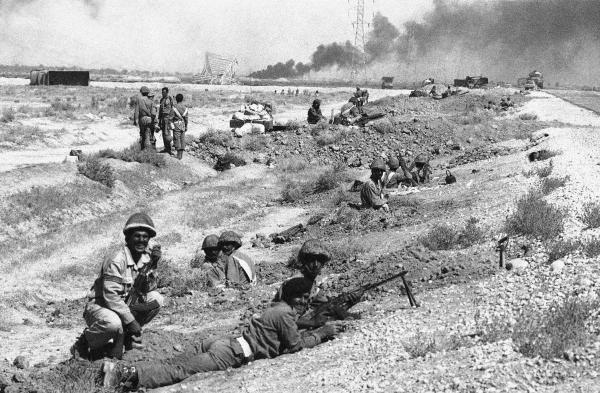
The 1980-88 Iran-Iraq war was a bloodbath and reactionary conflict on both sides. Here Iraqi troops entrenched along a highway near an Abadan oil refinery that was set ablaze by Iraqi artillery bombardment, October 19, 1980. Photo: AP
The U.S. has imposed decades of economic and political sanctions on Iran such as blocking it from selling its oil or importing needed goods, which have seriously impacted Iran’s economy and caused tremendous suffering. Under George W. Bush (2001-2009), the U.S., together with Israel, targeted Iran for regime change and seriously contemplated waging war.
More recently, in 2015, the U.S. and other world powers came to an agreement with Iran over its nuclear program, which was soon ripped up by Trump, despite Iran having abided by it. At the moment, the U.S. continues to impose draconian sanctions, back Israeli aggression, and surround and threaten Iran militarily. This has included the assassinations of high-ranking Iranian officials and nuclear scientists.
Each side regularly denounces the crimes and outrages of the other to justify their own crimes and outrages.
The Communist Party of Iran, Marxist-Leninist-Maoist
Revolutionary Maoists took part in the 1978-79 Iranian revolution that overthrew the Shah, or quickly returned afterward to work to overthrow the Islamic Republic. In 1981, the Union of Iranian Communists (Sarbedaran) launched a courageous armed uprising against the IRI in Amol in Iran’s north. This uprising was suppressed and many of its participants executed.
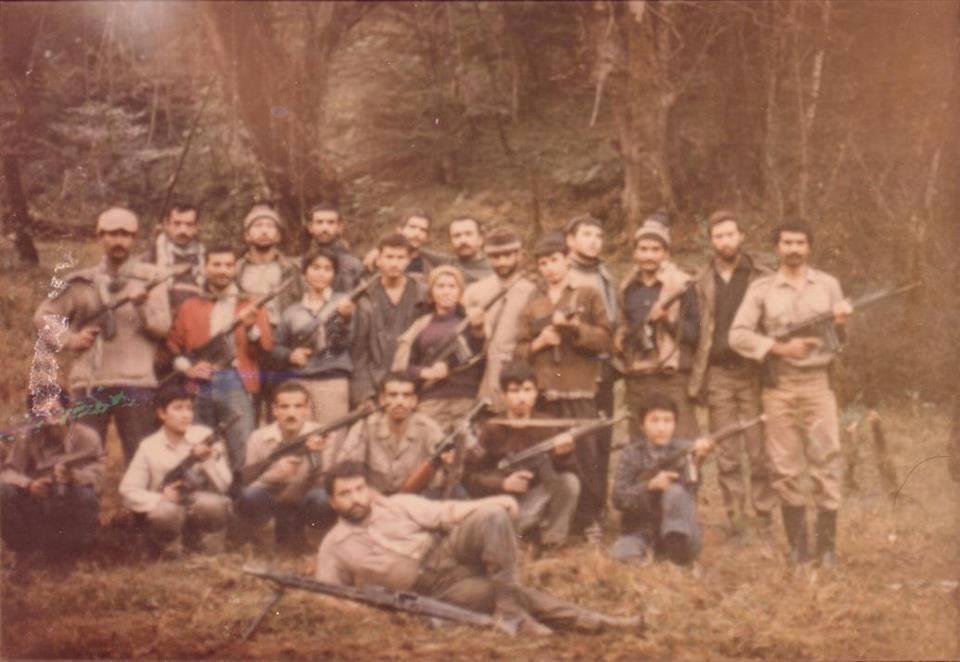
Fighters in the Amol uprising launched by revolutionary Iranian Maoists after the overthrow of the Shah
In the face of this terrible setback, a core of courageous and dedicated communists regrouped, summed up, and in 2001 formed the Communist Party of Iran, Marxist-Leninist-Maoist (CPI-MLM). Very significantly, the CPI-MLM takes the new synthesis of communism brought forward by Bob Avakian as its ideological and political framework. It is working in and outside Iran for the overthrow of the Islamic Republic and the establishment of a genuine revolutionary socialist republic in its place.

Banner from the Communist Party of Iran (MLM) at a May 1 demonstration in Paris against both Russian imperialism, and American, European, and NATO imperialists and the danger of nuclear world war. CPI-MLM
This is a profoundly important development for the people of Iran and the world, and today the CPI-MLM is actively involved in working to bring forward a real revolutionary movement in Iran.6
Iranians Rise Up: 2017, 2019 and Now
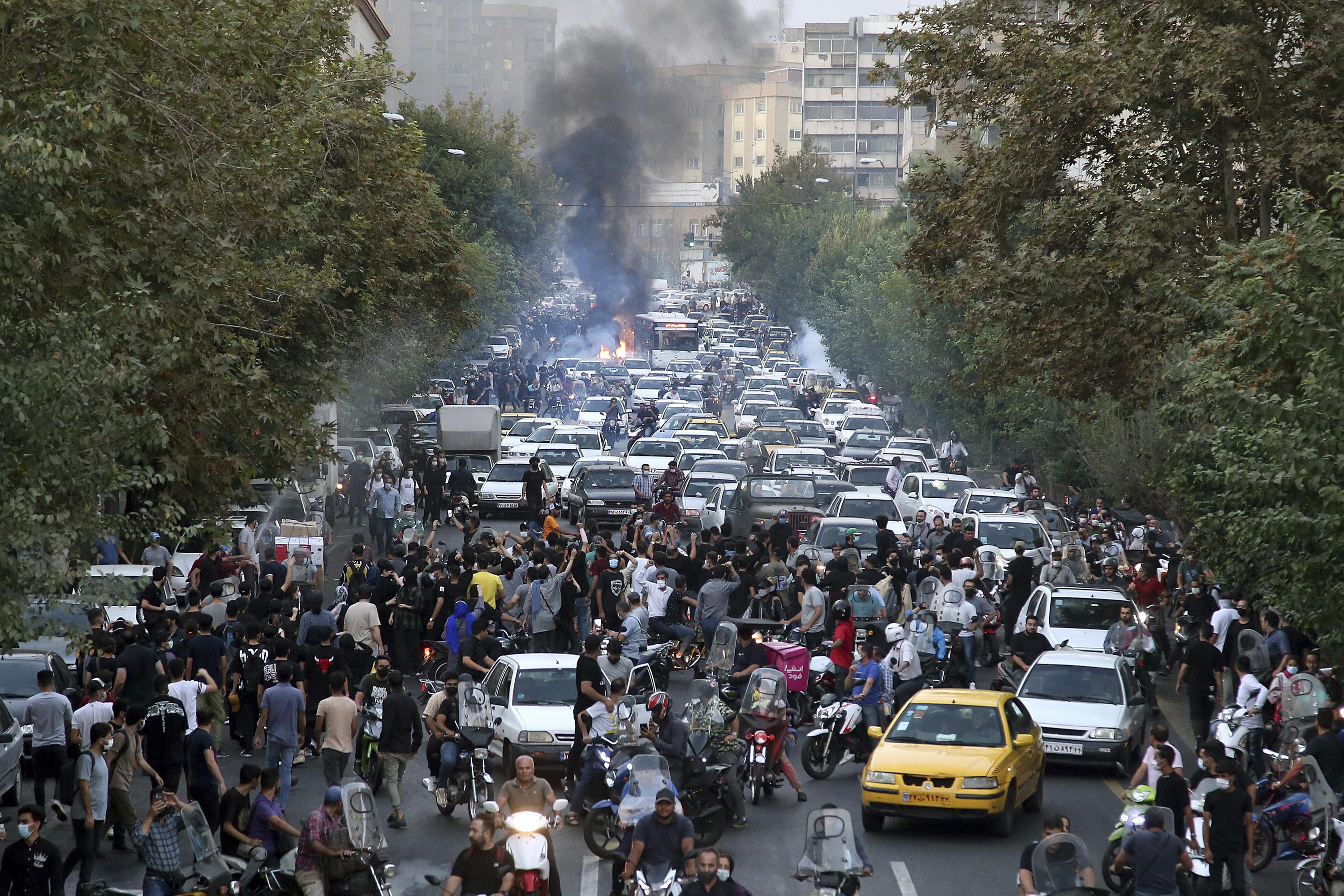
Protesters chant slogans during a protest over the death of a woman who was detained by the morality police, in downtown Tehran, Iran, September 21, 2022. Photo: AP
The Islamic Republic has faced different waves of mass resistance ever since it was founded. In 2017 and again in 2019, mass protests and rebellion took place across the country. These protests were met with brutal, murderous violence by the IRI. Outbreaks of mass protest have continued to erupt and have grown and broadened in the past year.
Political prisoners, artists, human rights activists and others have courageously spoken out. Massive protests have taken place in Khuzestan and elsewhere over poverty and the lack of water. Teachers and unionists went on strike this spring. And there has been growing resistance against the regime’s mandatory hijab law, including important protests in June.
Now the September 16 murder of 22-year-old Mahsa Amini at the hands of the hated “morality police” has sparked a new and unprecedented storm of mass rebellion. (See accompanying picture-article.)